Culture and festivals
Pollensa continues to enjoy renown within the cultural and artistic world thanks to public initiatives such as the International Music Festival, the Pollensa Museum and private initiatives such as the Dionís Bennàssar House-Museum, the Martí Vicenç Museum and a large number of art galleries.
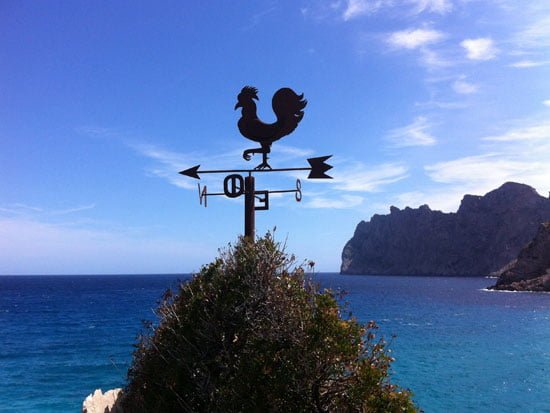
Pollensa (the ancient Roman city of Pollentia), Puerto de Pollensa and Cala de San Vicente, like Alcudia, constitute one of the most beautiful areas in the north of the island and, without a doubt, an attractive place to visit.
The municipality of Pollensa offers everyone who wants to come the possibility of enjoying a sea and mountain landscape or a wide range of cultural and service offerings. Beautiful places such as the Calvary or the Roman Bridge, after the 1st century AD and which is over the Torrente de Sant Jordi, the interesting municipal museum, the Music Festival, the numerous art exhibitions… make the visit to the center of Pollensa very attractive.
Pollensa has a prominent role in the cultural world of the island. From the early years of the 20th century, Pollensa became a favorite place for painters who visited the island. Names like Miguel Costa Llobera, Ramón Picó Campamar, Santiago Rusiñol, Joaquín Mir, Anglada Camarasa, Tito Cittadini, Dionís Bennássar and many more have contributed with their works (literary and pictorial) to making Pollensa a well-known place inside and outside of Mallorca.
Cala San Vicente and its surroundings
Pollensa (the ancient Roman city of Pollentia), Puerto de Pollensa and Cala de San Vicente, like Alcudia, constitute one of the most beautiful areas in the north of the island and, without a doubt, an attractive place to visit.
The municipality of Pollensa offers everyone who wants to come the possibility of enjoying a sea and mountain landscape or a wide range of cultural and service offerings. Beautiful places such as the Calvary or the Roman Bridge, after the 1st century AD and which is over the Torrente de Sant Jordi, the interesting municipal museum, the Music Festival, the numerous art exhibitions… make the visit to the center of Pollensa very attractive.
Pollensa has a prominent role in the cultural world of the island. From the early years of the 20th century, Pollensa became a favorite place for painters who visited the island. Names like Miguel Costa Llobera, Ramón Picó Campamar, Santiago Rusiñol, Joaquín Mir, Anglada Camarasa, Tito Cittadini, Dionís Bennássar and many more have contributed with their works (literary and pictorial) to making Pollensa a well-known place inside and outside of Mallorca.
Pollensa (the ancient Roman city of Pollentia), Puerto de Pollensa and Cala de San Vicente, like Alcudia, constitute one of the most beautiful areas in the north of the island and, without a doubt, an attractive place to visit.
The municipality of Pollensa offers everyone who wants to come the possibility of enjoying a sea and mountain landscape or a wide range of cultural and service offerings. Beautiful places such as the Calvary or the Roman Bridge, after the 1st century AD and which is over the Torrente de Sant Jordi, the interesting municipal museum, the Music Festival, the numerous art exhibitions… make the visit to the center of Pollensa very attractive.
Pollensa has a prominent role in the cultural world of the island. From the early years of the 20th century, Pollensa became a favorite place for painters who visited the island. Names like Miguel Costa Llobera, Ramón Picó Campamar, Santiago Rusiñol, Joaquín Mir, Anglada Camarasa, Tito Cittadini, Dionís Bennássar and many more have contributed with their works (literary and pictorial) to making Pollensa a well-known place inside and outside of Mallorca.
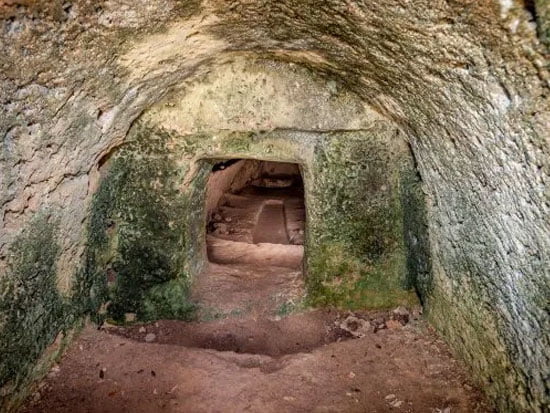
Alzinere is an archaeological complex located in Cala San Vicente, Mallorca. It consists of a talayot and several prehistoric caves dating back to around 1000 BC.
The Alzinere talayot is a circular stone structure that was used as a surveillance and defense tower. Around the talayot, you can find remains of houses and walls that formed a prehistoric settlement. The prehistoric caves found in Alzinere were used as homes and warehouses thousands of years ago. Remains of pottery, stone tools and other objects have been found in them that give clues about how people lived in prehistoric times. Today, you can visit the talayot and the prehistoric caves of Alzinere in Cala San Vicente.
The site is well preserved and has information panels that explain the history and importance of the archaeological remains found there. The visit is free and can be guided or self-guided.
Archaeological complex in Cala San Vicente
Alzinere is an archaeological complex located in Cala San Vicente, Mallorca. It consists of a talayot and several prehistoric caves dating back to around 1000 BC.
The Alzinere talayot is a circular stone structure that was used as a surveillance and defense tower. Around the talayot, you can find remains of houses and walls that formed a prehistoric settlement. The prehistoric caves found in Alzinere were used as homes and warehouses thousands of years ago. Remains of pottery, stone tools and other objects have been found in them that give clues about how people lived in prehistoric times. Today, you can visit the talayot and the prehistoric caves of Alzinere in Cala San Vicente.
The site is well preserved and has information panels that explain the history and importance of the archaeological remains found there. The visit is free and can be guided or self-guided.
Alzinere is an archaeological complex located in Cala San Vicente, Mallorca. It consists of a talayot and several prehistoric caves dating back to around 1000 BC.
The Alzinere talayot is a circular stone structure that was used as a surveillance and defense tower. Around the talayot, you can find remains of houses and walls that formed a prehistoric settlement. The prehistoric caves found in Alzinere were used as homes and warehouses thousands of years ago. Remains of pottery, stone tools and other objects have been found in them that give clues about how people lived in prehistoric times. Today, you can visit the talayot and the prehistoric caves of Alzinere in Cala San Vicente.
The site is well preserved and has information panels that explain the history and importance of the archaeological remains found there. The visit is free and can be guided or self-guided.
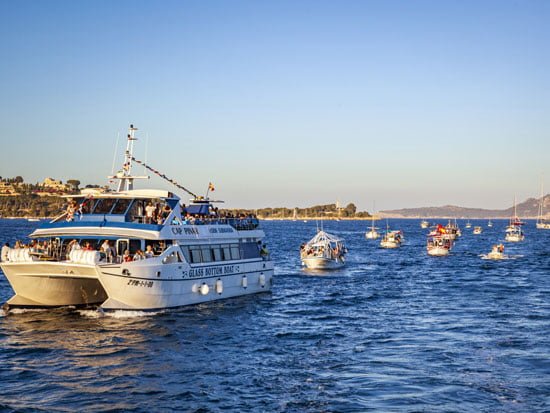
Festivities of the “Mare de Déu de la Mar” Cala San Vicente: 1st Sunday of July. These festivities usually last the entire weekend and we find: popular dances, popular games, “cercavila”, parade of big heads, children’s festival and festival. A solemn mass is held in honor of the Virgin, a concert by the municipal band, fireworks and fireworks, etc. Fiesta de la mare de Déu dels Angels (July 26-August 2)
Local festivals and celebrations
Festivities of the “Mare de Déu de la Mar” Cala San Vicente: 1st Sunday of July. These festivities usually last the entire weekend and we find: popular dances, popular games, “cercavila”, parade of big heads, children’s festival and festival. A solemn mass is held in honor of the Virgin, a concert by the municipal band, fireworks and fireworks, etc. Fiesta de la mare de Déu dels Angels (July 26-August 2)
Festivities of the “Mare de Déu de la Mar” Cala San Vicente: 1st Sunday of July. These festivities usually last the entire weekend and we find: popular dances, popular games, “cercavila”, parade of big heads, children’s festival and festival. A solemn mass is held in honor of the Virgin, a concert by the municipal band, fireworks and fireworks, etc. Fiesta de la mare de Déu dels Angels (July 26-August 2)
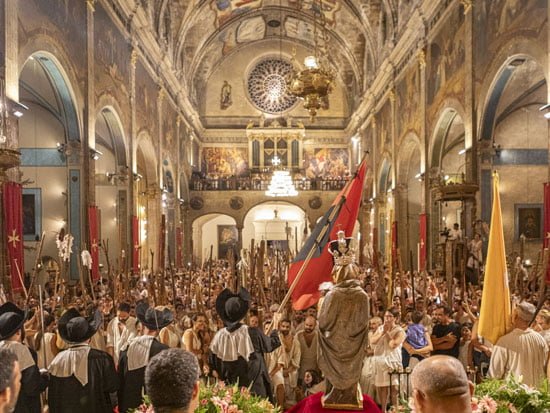
On July 26, the Patron Saint Festivities begin in Pollença, a civic-religious celebration of very ancient origin. The cannon shots, the rockets and the ringing of bells will open the festival programme, which will last until August 2, the day of the Mare de Déu dels Àngels, with a wide range of activities for all tastes.
Festival of the Patron Saint of Pollensa
On July 26, the Patron Saint Festivities begin in Pollença, a civic-religious celebration of very ancient origin. The cannon shots, the rockets and the ringing of bells will open the festival programme, which will last until August 2, the day of the Mare de Déu dels Àngels, with a wide range of activities for all tastes.
On July 26, the Patron Saint Festivities begin in Pollença, a civic-religious celebration of very ancient origin. The cannon shots, the rockets and the ringing of bells will open the festival programme, which will last until August 2, the day of the Mare de Déu dels Àngels, with a wide range of activities for all tastes.
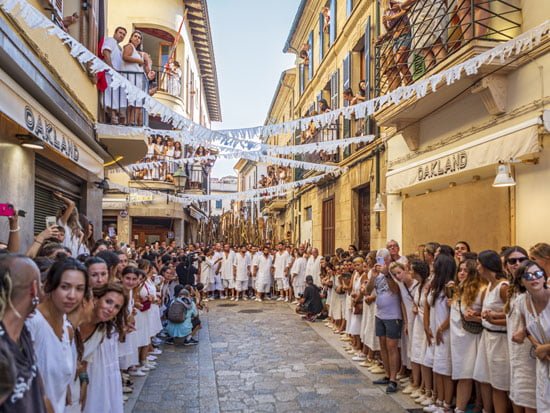
The central event of the festivities is the Simulacrum of Moors and Christians, to commemorate the battle of the people of Pollensa against 1,500 Moors led by the corsair Dragut, which took place on May 30, 1550. That day Pollensa received the most important corsair attack that it had never suffered. The battle was won thanks to the help of Joan Mas, who went out to Calle Major, warned of the danger and led the heroic combat against the adversaries. The simulation was incorporated into the festival program in the mid-19th century to recreate a historical event very present in the memory of the people of Pollensa, constituting a very colorful celebration in which practically the entire town participates, the Christians in white and those of Dragut in color. The drill is announced at 5 in the morning, on August 2, after the festival, when the music band plays the Alborada. The entire town is impatiently waiting for this special moment. The festival every year has stages and performances by various musical groups.
Simulacrum of Moors and Christians
The central event of the festivities is the Simulacrum of Moors and Christians, to commemorate the battle of the people of Pollensa against 1,500 Moors led by the corsair Dragut, which took place on May 30, 1550. That day Pollensa received the most important corsair attack that it had never suffered. The battle was won thanks to the help of Joan Mas, who went out to Calle Major, warned of the danger and led the heroic combat against the adversaries. The simulation was incorporated into the festival program in the mid-19th century to recreate a historical event very present in the memory of the people of Pollensa, constituting a very colorful celebration in which practically the entire town participates, the Christians in white and those of Dragut in color. The drill is announced at 5 in the morning, on August 2, after the festival, when the music band plays the Alborada. The entire town is impatiently waiting for this special moment. The festival every year has stages and performances by various musical groups.
The central event of the festivities is the Simulacrum of Moors and Christians, to commemorate the battle of the people of Pollensa against 1,500 Moors led by the corsair Dragut, which took place on May 30, 1550. That day Pollensa received the most important corsair attack that it had never suffered. The battle was won thanks to the help of Joan Mas, who went out to Calle Major, warned of the danger and led the heroic combat against the adversaries. The simulation was incorporated into the festival program in the mid-19th century to recreate a historical event very present in the memory of the people of Pollensa, constituting a very colorful celebration in which practically the entire town participates, the Christians in white and those of Dragut in color. The drill is announced at 5 in the morning, on August 2, after the festival, when the music band plays the Alborada. The entire town is impatiently waiting for this special moment. The festival every year has stages and performances by various musical groups.
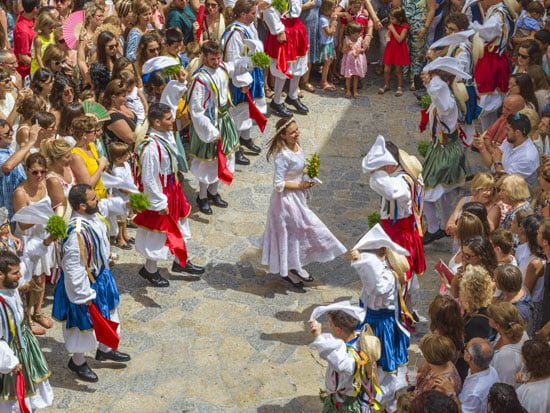
On the same day as the Patron Saint, August 2, at 11:00 a.m., the Mass and the Cossiers dance will be celebrated as usual. At 7:00 p.m., after the procession with the ancient image of the Patron Saint, the drill will begin. Once the battle is over, around 9:00 p.m., the Christians will sing the Tedèum by Mossèn Miquel Tortell, in thanksgiving, and the Càntic dels Goigs by Costa i Llobera. The party always ends with a spectacular fireworks display. Festivals, sports activities (cycling, etc.), concerts, children’s theater “show”, cinema, children’s activities, “ball de bot”, Catalan song recitals, various festivals, etc. On the day of the festival, at dawn, the Alborada festival, a time when the most absolute silence reigns. At morning mass, the recovered “cossiers” perform various dances, including the “ball de l’Oferta.” There are twelve cossiers and the lady. Festival of Moors and Christians to commemorate the victory of the inhabitants of Pollensa over the Turkish pirates, which ended in the third battle on the football field. Fireworks.
Dance of the "cossiers"
On the same day as the Patron Saint, August 2, at 11:00 a.m., the Mass and the Cossiers dance will be celebrated as usual. At 7:00 p.m., after the procession with the ancient image of the Patron Saint, the drill will begin. Once the battle is over, around 9:00 p.m., the Christians will sing the Tedèum by Mossèn Miquel Tortell, in thanksgiving, and the Càntic dels Goigs by Costa i Llobera. The party always ends with a spectacular fireworks display. Festivals, sports activities (cycling, etc.), concerts, children’s theater “show”, cinema, children’s activities, “ball de bot”, Catalan song recitals, various festivals, etc. On the day of the festival, at dawn, the Alborada festival, a time when the most absolute silence reigns. At morning mass, the recovered “cossiers” perform various dances, including the “ball de l’Oferta.” There are twelve cossiers and the lady. Festival of Moors and Christians to commemorate the victory of the inhabitants of Pollensa over the Turkish pirates, which ended in the third battle on the football field. Fireworks.
On the same day as the Patron Saint, August 2, at 11:00 a.m., the Mass and the Cossiers dance will be celebrated as usual. At 7:00 p.m., after the procession with the ancient image of the Patron Saint, the drill will begin. Once the battle is over, around 9:00 p.m., the Christians will sing the Tedèum by Mossèn Miquel Tortell, in thanksgiving, and the Càntic dels Goigs by Costa i Llobera. The party always ends with a spectacular fireworks display. Festivals, sports activities (cycling, etc.), concerts, children’s theater “show”, cinema, children’s activities, “ball de bot”, Catalan song recitals, various festivals, etc. On the day of the festival, at dawn, the Alborada festival, a time when the most absolute silence reigns. At morning mass, the recovered “cossiers” perform various dances, including the “ball de l’Oferta.” There are twelve cossiers and the lady. Festival of Moors and Christians to commemorate the victory of the inhabitants of Pollensa over the Turkish pirates, which ended in the third battle on the football field. Fireworks.
